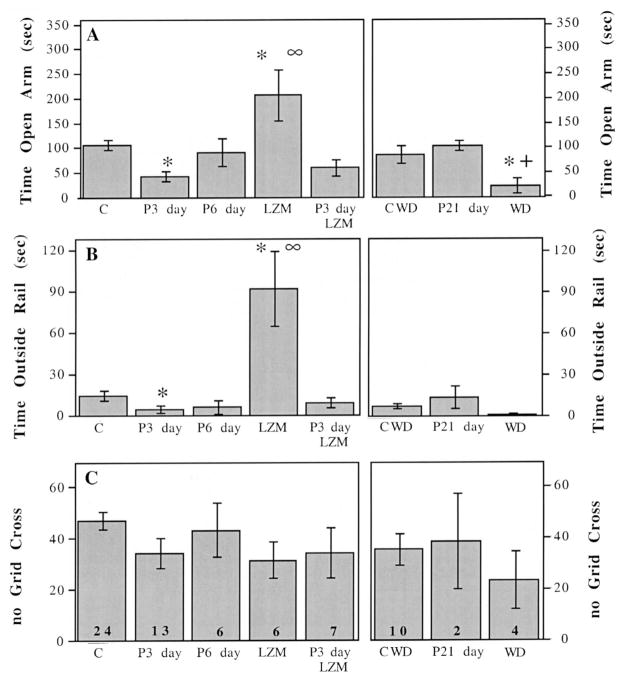Fig. 5.
Time course of measures of anxiety across the P exposure period. (A, left axis): time spent (s) in the open arm of the elevated plus maze is decreased after 3 days of P exposure (P3 day, 5 mg in oil, i.p.) compared to vehicle injected rats (C) (P3 day vs. C, *P<0.001), and returns to control levels after 6 days of P injections (P6 day). Lorazepam (LZM) significantly increases time spent in the open arm compared to vehicle, assessed in control animals (LZM vs. C, *P<0.001). In contrast, LZM does not increase time spent in the open arm after 3 days P injections (P3 day LZM) (LZM vs. P3 day LZM, ∞P<0.001;). (A, right axis): P treatment for 21 days (P21 day) is similar to control conditions (C-WD) while P withdrawal (WD) significantly decreased time spent in the open arm compared to controls (PWD vs. C-WD, *P<0.02) or to P 21 day treatment (PWD vs. P21 day, +P<0.006). Sample sizes are indicated in the bottom of the bar in panel and are the same as for all graphs in Fig. 1. (B) LZM significantly increases time spent beyond the rail compared to vehicle injections in control animals (LZM vs. C, *P<0.001), but does not do so following 3 days P injections (∞P<0.001; LZM vs. P3 day LZM). (C) There is no significant effect of any treatment on locomotor activity assessed by number of grid crosses in the elevated plus maze.

